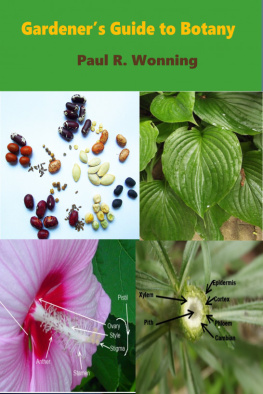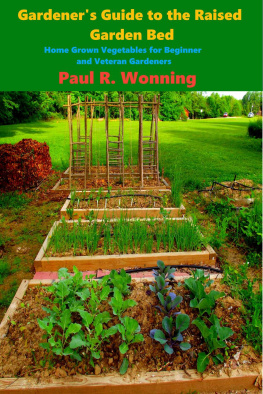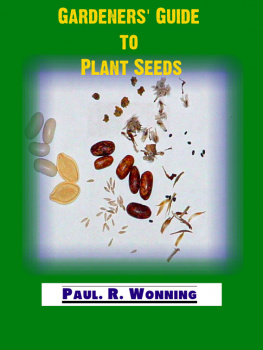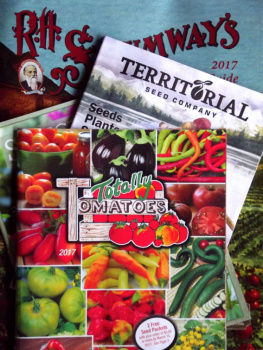Gardeners' Guide toFlowers
A Basic Botany Handbook AboutFlowers for the Gardener
Gardeners Guide to Botany Series -Book 3
Paul R. Wonning
Description
Flowering plantsare one of the most successful classes of organisms on earth,appearing from the Arctic to the tropics. The Gardeners' Guide to Flowers suppliesgardeners with basic botanical information about the biology andlife cycle of the flower.
Gardeners' Guide toFlowers
Published Paul R.Wonning
Copyright 2016 by Paul R.Wonning
Smashwords Edition
This ebook is licensed for yourpersonal enjoyment only. This ebook may not be re-sold or given wayto other people. If you would like to share this book with anotherperson, please purchase an additional copy for each recipient. Ifyou're reading this book and did not purchase it, or it was notpurchased for your use only, then please return to Smashwords.comand purchase your own copy. Thank you for respecting the hard workof this author.
All rights reserved.
If you would like emailnotification of when new installments of
this series are available, emailthe author for inclusion in the subscription list.
Paul R. Wonning
paulwonning@gmail.com
Facebook Mossy FeetBooks
Mossy Feet Books

Table of Contents
Sample Chapter 1
Also in this Series
Gardeners' Guide to PlantSeeds
Gardeners' Guide to the PlantRoot
Gardeners' Guide toFlowers
Gardeners' Guide ToLeaves
Gardeners' Guide To PlantStems
Gardeners' Guide ToBotany
Gardeners' Guide toFlowers
Paul R. Wonning
Function of the Flower
Flowering plants(angiosperms) are of recent development. The ability of floweringplants to reproduce without water being a part of the process, asis necessary with fungi and other lower forms of plants, hasallowed flowering plants to become successful. The function of theflower is simple. It must satisfy the plants need to reproduce. Todo this it must produce seeds. The design of the various parts ofthe flower, the nectar and fragrance serve to aid the flower in itsduty. Using color, fragrance and nectar as a food source the flowerattracts various creatures, mostly insects, to feed on the nectar,spreading the pollen about and aiding the plant in its need toproduce seeds.
Parts of the Flower
The typical flower does not exist. Each flower is a bitdifferent as to color; size, shape and physical make up so not allflowers have all of the parts of the "typical flower" described inthis article.
The most recognized part of thetypical flower is the petal. These are usually brightly colored andthis is the part that most gardeners prize. In the typical flower,the petal usually forms a ring around the central part of theflower. All of the petals of the flower comprise the corolla. Thepetal is not essential to seed production but does serve a role inattracting pollinating insects.
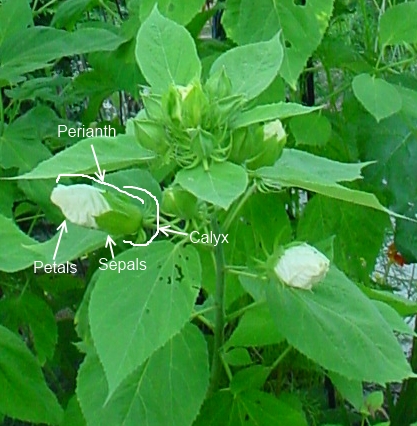
Outside and usually below thepetals are the sepals. These are usually green and resemble leaves.They typically clasp the flower. The sepals also play no role inseed production but serve to protect the flower while the flowerdevelops. Botanists use the term calyx for all the sepals as agroup. The term for the calyx and corolla combined is theperianth.
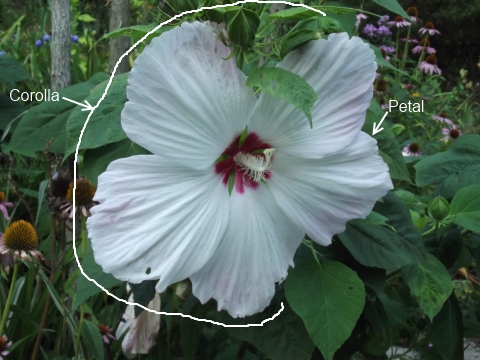
The central portion of the typicalflower contains the two organs that are essential to seedproduction. The stamens are the male portion of the flower and bearthe pollen. The stamen is a stalk like structure in which thefilament supports the pollen-bearing anther at its tip. The shapeof the anther varies according to the species of the plant but itsfunction is always the same, to produce the pollen so essential tothe production of the seed.
The second organ found in atypical flower is the pistil. This is usually in the very centerwith the stamens circling it. The pistil is the female portion ofthe flower. Three parts comprise the typical pistil. At the top isthe stigma that has a sticky substance on it to which the pollenadheres. The style supports the stigma and leads down to theswollen base, or ovary, which contains the tiny ovules that will,after pollination, form the seeds.
Flower Types
Inflorescence
The term inflorescence includesarrangements of more than one flower and refers to the arrangementof the flowers on the plant. There are several types of floraldisplays and many variations of those types.
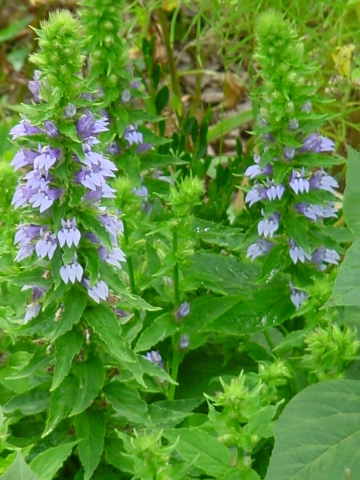
Spike
Several individual flowersarranged along a central stem, creating a spear like arrangement.The flowers attach directly to the stem with no stalk.
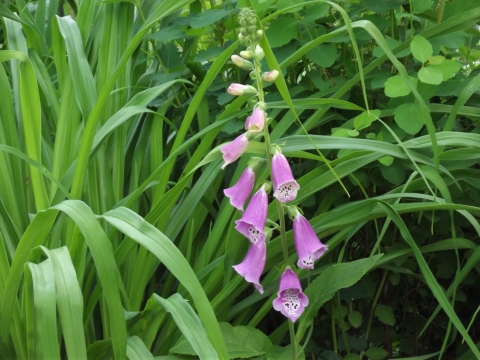
Raceme
This is also an elongatedarrangement, similar to the spike but the flowers connect to thestem with a stalk.
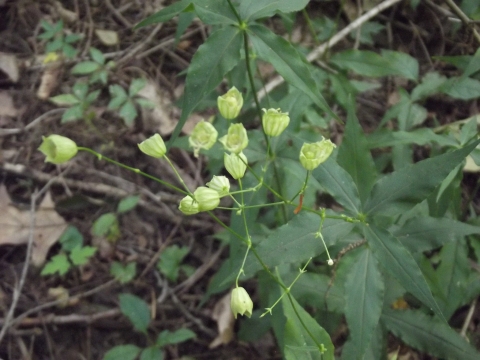
Panicle
This arrangement is also similarto the spike but there are two or more flowers on eachstalk.
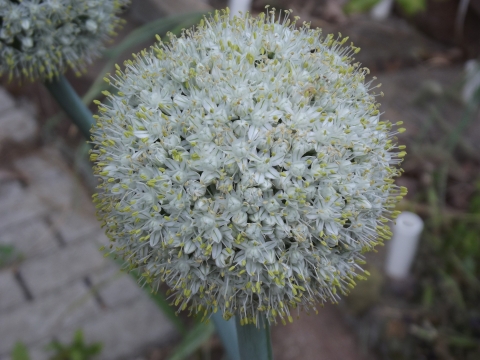
Head
This is a rounded cluster of manyflowers each connected to a central stem.
Umbel
This is a rounded cluster offlowers at the end of a long stem. Each individual flower emanatesfrom a single point at the end of the stem held aloft by a singlestalk.
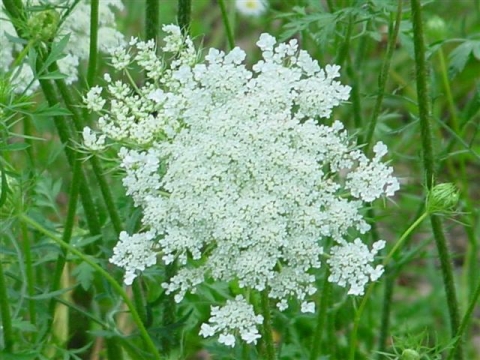
Corymb
This is similar to an umbel inthat it is a rounded cluster. The difference is that each flowerstalk originates from a different point on the stem.
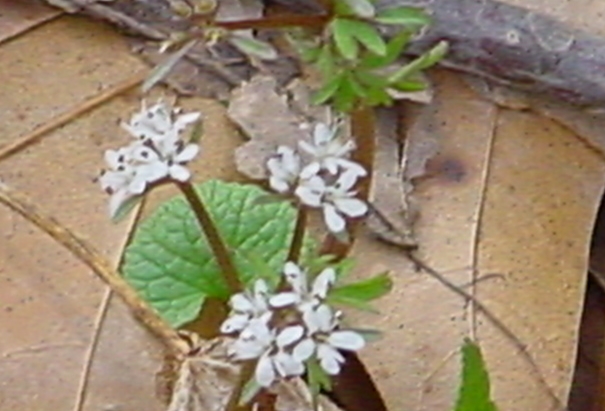
Cyme
This arrangement creates a morerandom pattern. There are several umbels connected to the stem at asingle point.
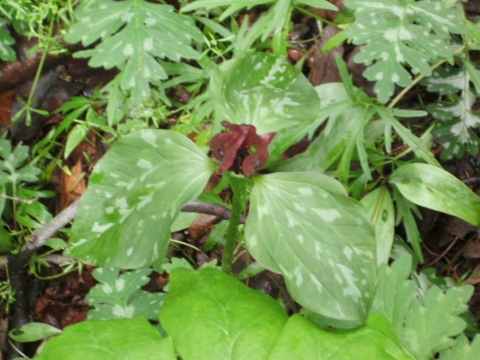
Sessile
This type of flower connectsdirectly to the stem with no stalk.
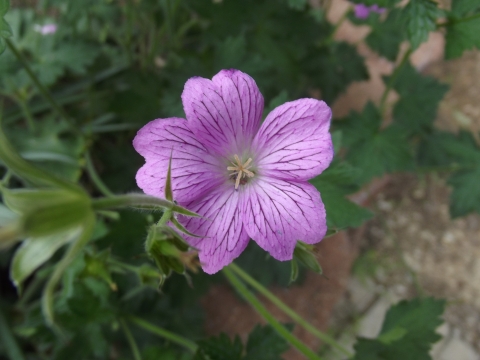
Regular Flower
This type of flower has an equalnumber of petals and sepals. All the petals on the flower are ofuniform shape and size.
Next page

